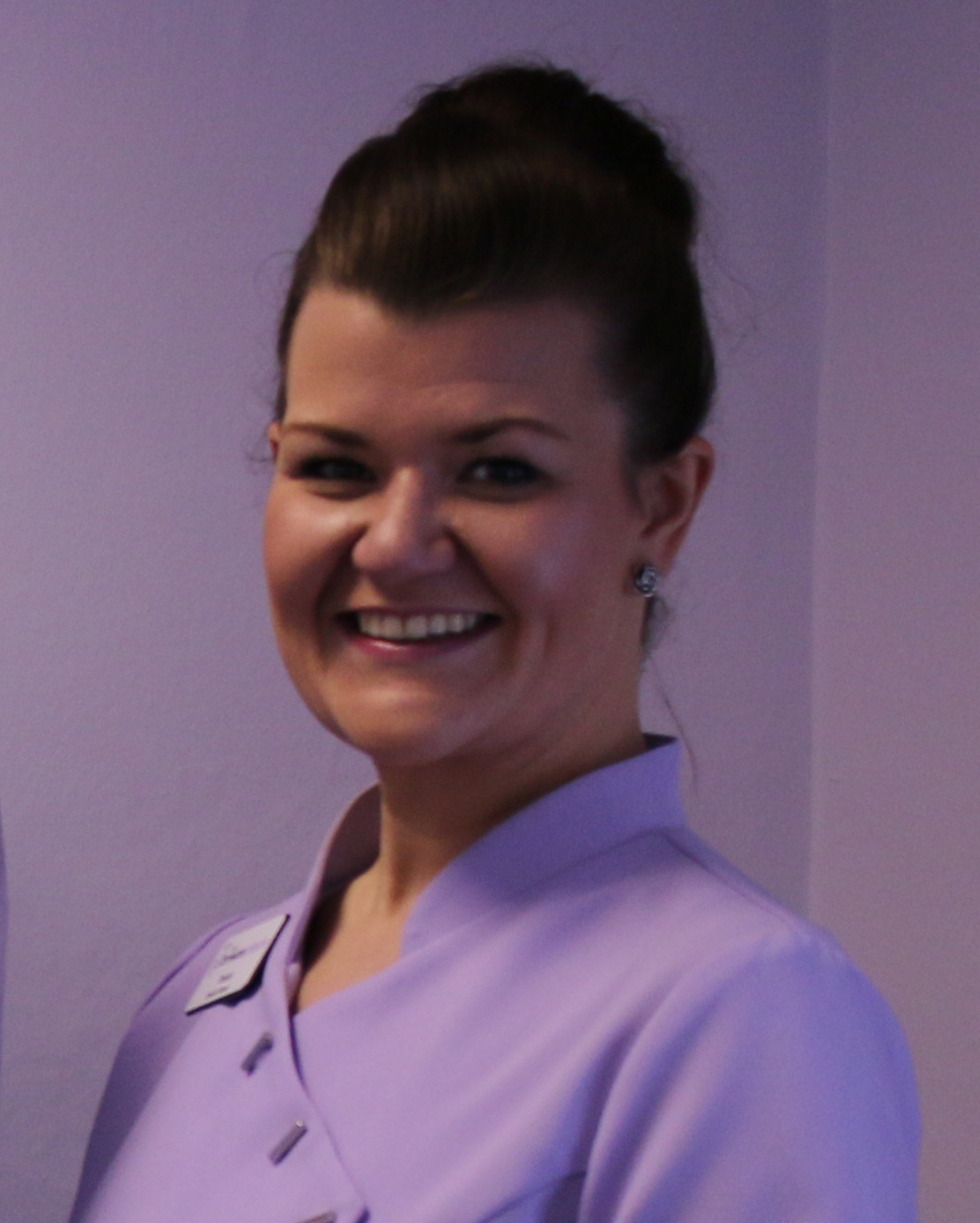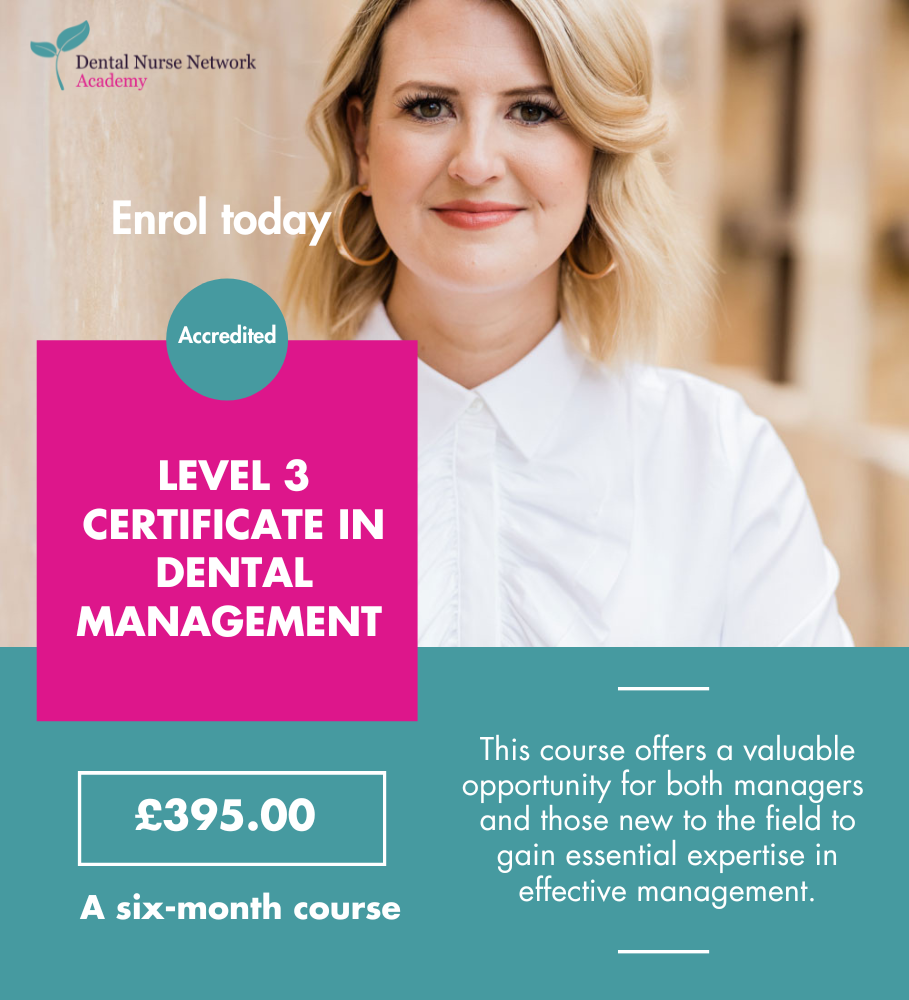 After leaving school at sixteen and not knowing what career path to take, I got a job in retail. I took the opportunity to complete NVQs made available to me through the company and worked my way up from being a part-time sales assistant to become store manager. Like many high street stores, the company began closing down shops – five within a thirty-mile radius of where I was positioned. I took this as my cue to start thinking about a change of career.
After leaving school at sixteen and not knowing what career path to take, I got a job in retail. I took the opportunity to complete NVQs made available to me through the company and worked my way up from being a part-time sales assistant to become store manager. Like many high street stores, the company began closing down shops – five within a thirty-mile radius of where I was positioned. I took this as my cue to start thinking about a change of career.
Some time previously, I’d seen the local community dentist advertising for a dental nurse. I knew that the position would have been filled already, but figured they may be able to help me find out how to get into the industry. After a few phone calls, I managed to speak to the local dental nurse tutor who said there was a course due to start the same summer. However, in order to get onto the course I’d need a full-time job. At the same time, I wouldn’t get a full-time job unless I was on a course. The tutor left the ball in my court, advising that she would be interviewing for the course that May and if I had managed to get a job she would look out for me during the interviews.
I took the bull by the horns and sent my CV out to all the local dentists. At the same time, I arranged to do work experience at my own dental surgery. I was lucky enough to find a dental practice a short drive away which was expanding and which would soon be looking for a trainee dental nurse to work with its new dentist. My interview was successful, as was the dental nursing course. Eighteen months later I was proud to have gained my National Certificate in Dental Nursing. I was working full time in an NHS and private general dental practice and was registered with the GDC.
After six years of working in general practice and enthusiastically completing my CPD, I heard about a vacancy for a dental nurse in an orthodontic practice. Having no orthodontic experience at all, I wasn’t sure whether I stood a chance but thought I’d apply and see if I got an interview. I rang the practice to find out more details about the role and then emailed my CV. After a few days, I received a reply inviting me to an interview the following week. I was offered the job, and although I was sad to leave the team within which I had completed all my training in general dentistry, I was excited about my new role and the opportunities I had ahead of me.
I began working in the specialist orthodontic practice. It could not have been more different to general practice. Patient care and avoiding cross-infection was still the basis of the role, but assisting the orthodontist was very different to assisting the dentists and I soon got to learn about each stage of orthodontic treatment and about all the different instruments. My employer had offered to put me through any post-registration qualifications if I wanted to gain them and left it up to me to find what I wanted to do. Speaking to one of my new colleagues, I found out there was an orthodontic nursing qualification but that the course was not run every year. I looked into it and found that North Yorkshire and York had a part-deanery-funded course running the following year and that applications were being taken. I enrolled on the course which involved a lot of home study, completion of a record of experience portfolio over a twelve-month period, and a written exam held at Wakefield college. The course helped me to understand my role as an orthodontic nurse. I learned the importance of accurate pre-treatment records as well as the tooth movements involved in orthodontics. The course required me to be able to cast study models and produce digital and hand-traced cephalometric radiographs. In order for me to acquire this skill, I worked for a day in another practice where they had digital radiographic imaging to work with and I spent a morning in a local laboratory casting up working models and trimming orthodontic models from impressions taken of my workmates. The course helped me gain optimal knowledge for my role and helped me become an efficient, qualified orthodontic nurse. Occasionally, impression-taking can be completed as a module for the orthodontic nursing qualification. However, the course I attended was classroom- and not clinical-based, so it was not possible for me to complete the addition module. I have since gone on to complete an online impression-taking certificate through the Dental Nurse Network.
The orthodontic nursing qualification was originally introduced to be part of the first module for orthodontic therapy. However, it now stands alone as a post-registration qualification for dental nurses working in orthodontics.
I was not aware of the role of orthodontic therapist until I began working in this specialised area of dentistry. It’s now a role I aspire to. In order to be able to hold such a position, I will need to complete a further post-registration qualification. Working alongside the orthodontist and orthodontic therapist, I have got to know how a therapist works. It is not currently within the therapist’s scope of practice to take radiographs. However, radiographs are part of pre-treatment records, and in order for a therapist to be able to take full pre-treatment records they must hold a dental nurse’s post-registration qualification in radiography. For my career to develop, I will need to complete a dental radiography qualification, which I hope to do in the future. I hope to encourage other dental nurses to progress their career through the Dental Nurse Network.
Tracey Taylor RDN


